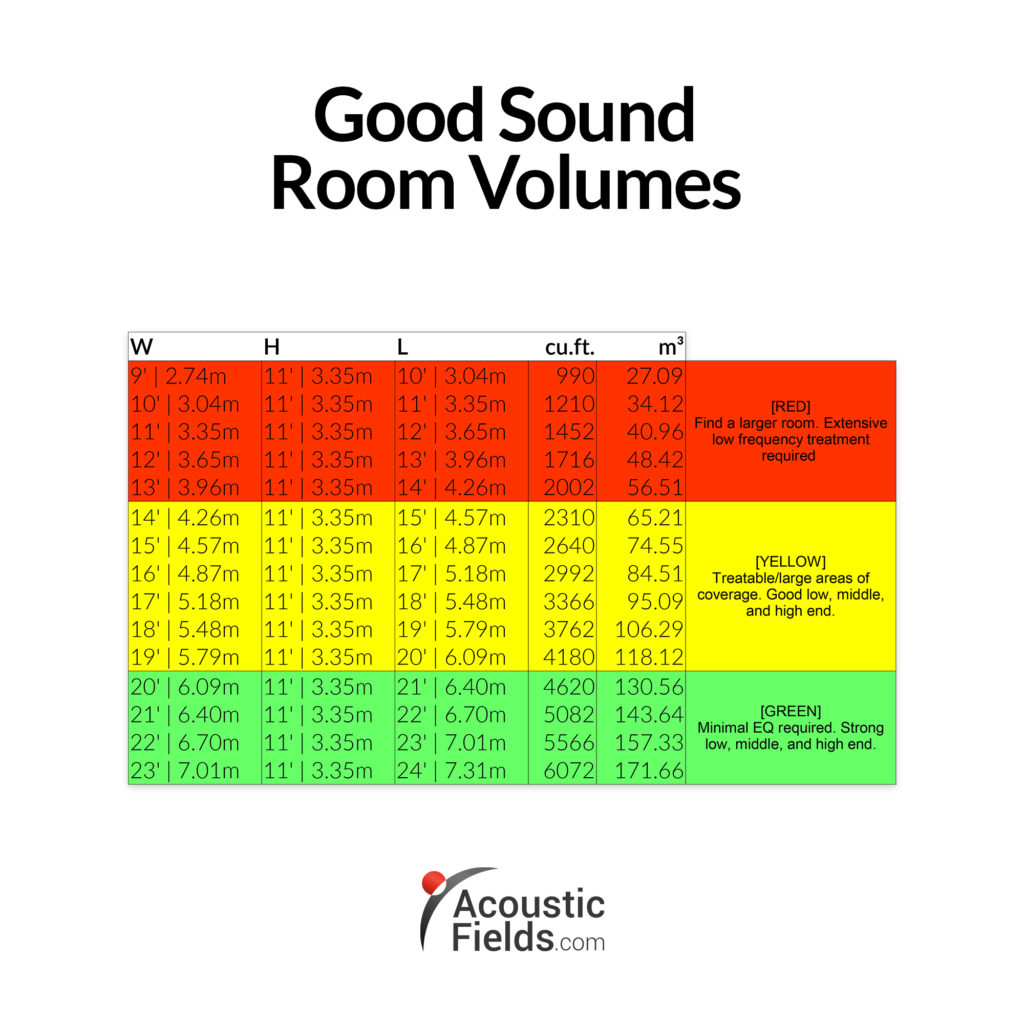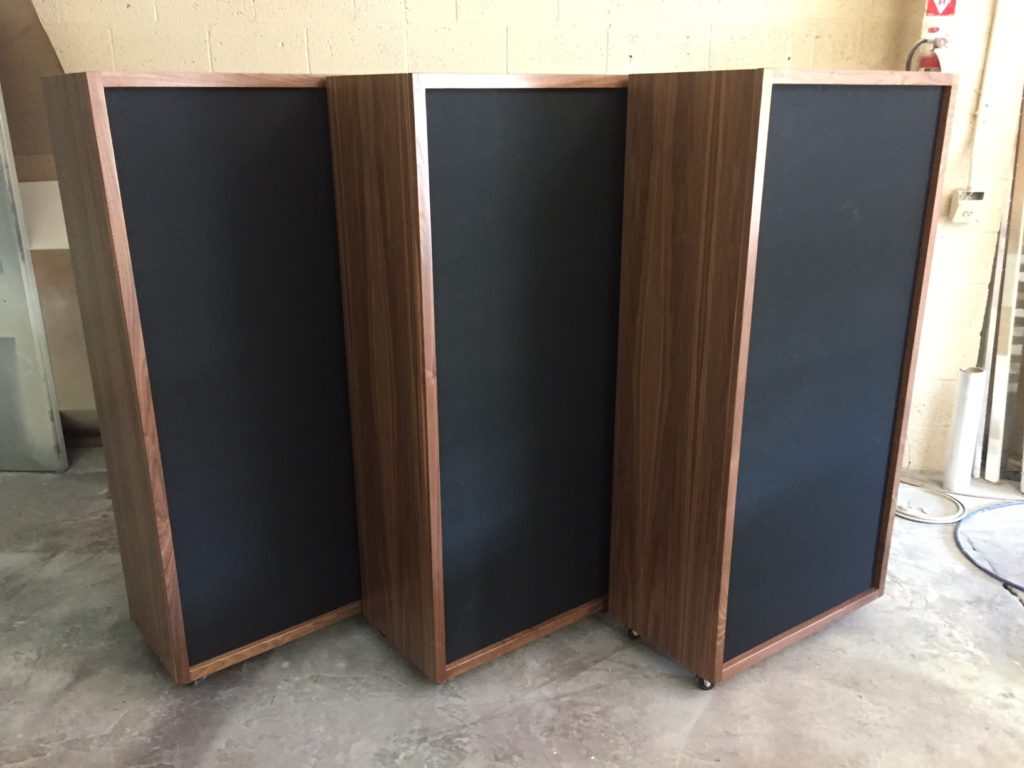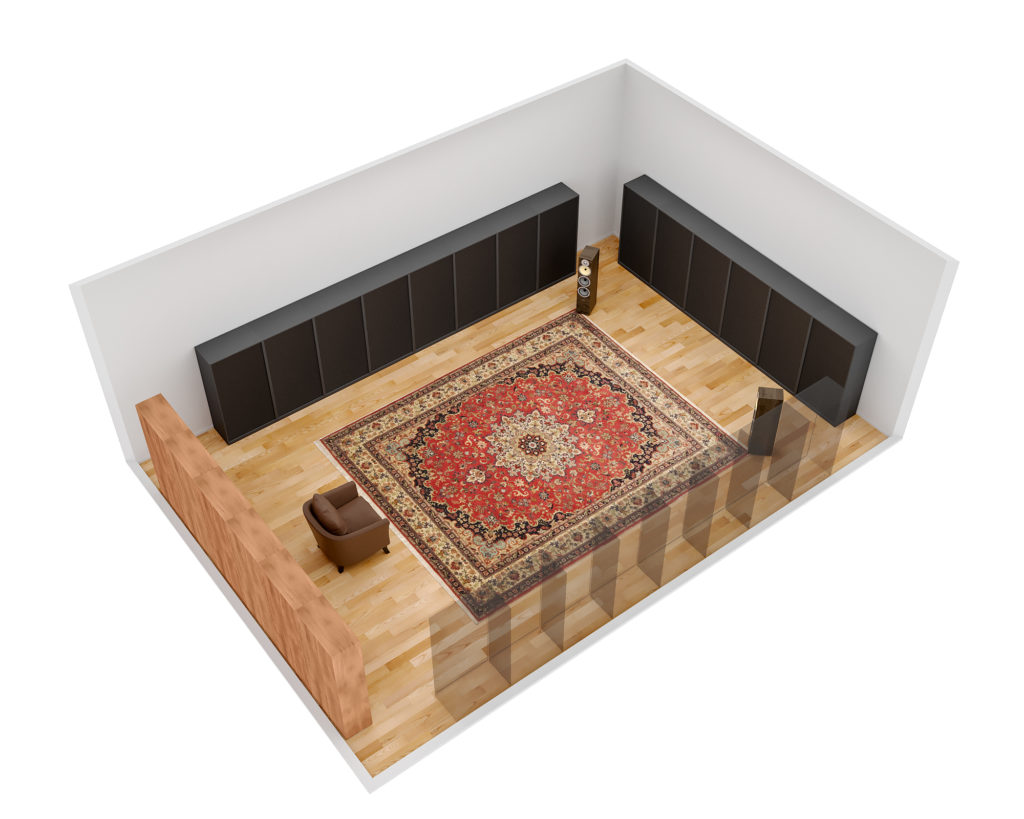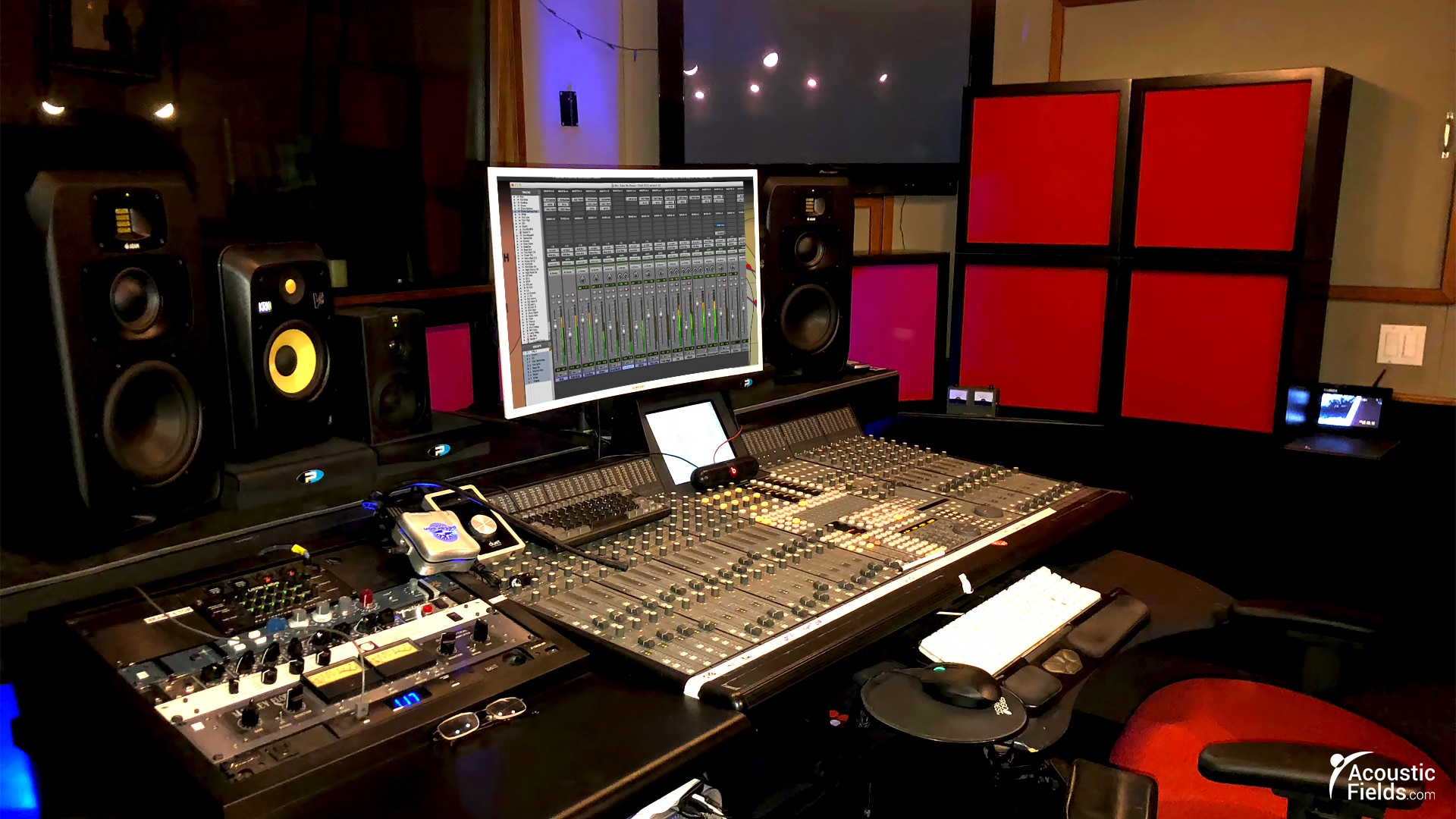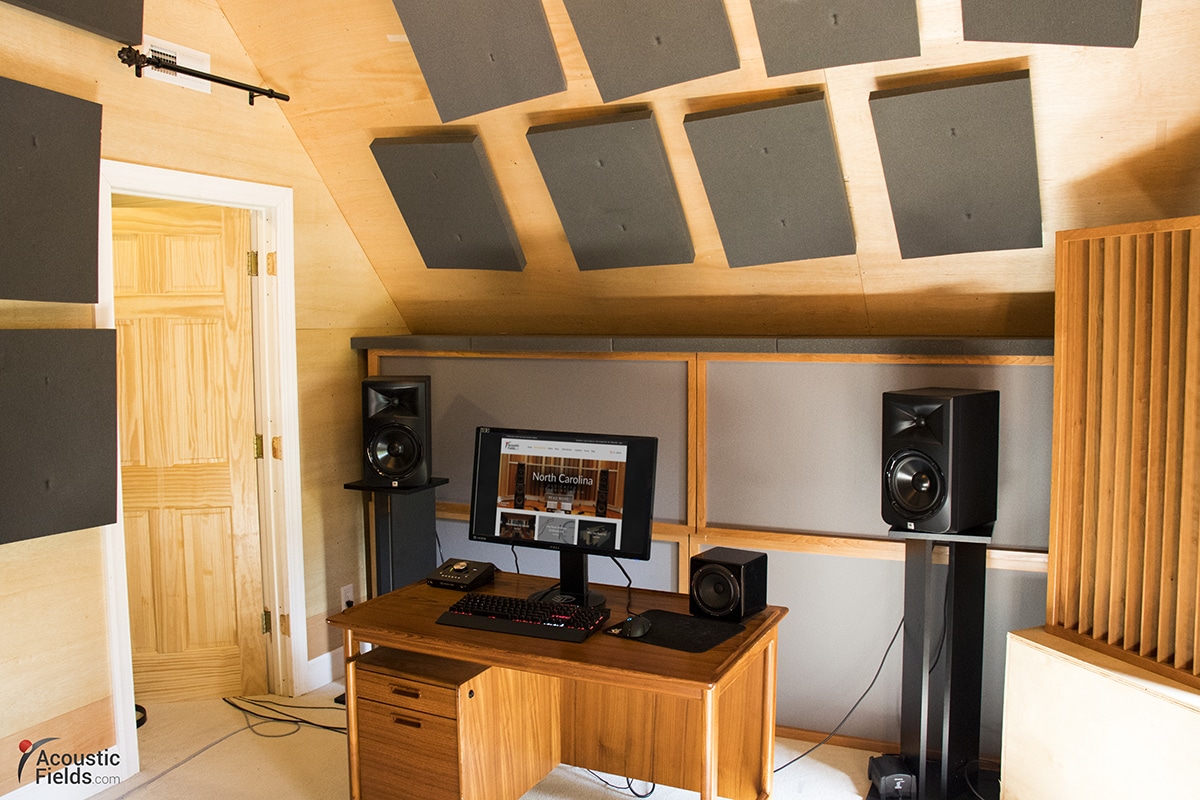As you will see in the below video I was recently asked the following. “Dennis, why are you so against using a studio room acoustic calculator to work out what treatment you need?” We have updated this blog on 12/1/19 to reflect current thinking and knowledge.
I’m not against using them. I think they’re great to start points but acoustics is a tuning process and you have to have a lot of understanding about the current technologies that are available on the market and, more importantly getting back to usage, you have to have an understanding of what you’re trying to achieve in the room. Some things are possible, many are not and this is down to physics. There’s a lot of companies out there that will tell you can do everything in any room. In my experience, you cannot. Some rooms are just not suitable for certain uses. What you have to realize with room ratios is that you must choose a ratio that minimizes low-frequency pressure issues but also allows for the required treatment space. It’s one thing to have good ratios with no treatment space. However, it is much better to have good ratios after treatment space is occupied with treatment.
What A Studio Room Acoustic Calculator Will Not Tell You
You can’t play your electric bass guitar in a closet. It won’t sound good. It never will sound good and no matter how much treatment you put in the closet. So you’ve got to step back, take a deep breath and try to decide what you’re trying to accomplish in your room. Then that said, analyzation of the room is a great start but more importantly once you have the room analyzed it’s that treatment and tuning process that goes with the analyzation that’s more critical.
The analyzation will tell you what problems you have but it won’t tell you how to solve them. You have to figure that out for yourself. You have to measure the amplitudes or the strength of each problem, and then find the appropriate technology that will minimize the issues and more importantly, where to put them and in what quantities. For example “Do I put it on the ceiling, do I build it into the structure, do I put it on the rear wall, the front wall, the sidewall? All these variables have to be taken into consideration and then after you figure those out you do your measurements, you find your areas, you select your technology, you do your install and then the real work begins, namely the tuning process, the listening, the evaluation. You must be determining room acoustics and usage before you use a studio room acoustic calculator.
You Then Have To Ask “Have I Achieved My Goals?”
Do I have a good balance between direct and reflected energy? Is my low-frequency energy managed correctly? Am I hearing all the low-frequency notes with the same attack and decay as my middle and highs… and yes you can achieve that. You have to give up a lot of square footage but you can do it. Those are things that can be done and must be done. This is a process. Each one of these elements is an important step in the process but identifying the problem, coming up with a solution and then applying the solution and adjusting and fine-tuning that solution over time is to me, way more important than using a studio calculator. Because it’s in those final steps that you get the room that you want.
Danny Wyatts’ Studio Is A Case In Point
Danny Wyatt said in the below video, “I’m done with the room. I’m so happy with it I’m not doing anything more”. That’s the point you want to get to. Danny didn’t get to that point right away, it took a while because it’s a tuning process. So, tools are great for they help us identify the problems, they’ll tell us how big the problem is. They won’t tell us where but then we’ll have to figure out what treatments were going to use, how much balance between absorption and diffusion we’re going to use, where to put it in our rooms. Maybe we start with too much so we pull a little bit out. But you have to know what you want.
Bonela: http://www.acoustics.salford.ac.uk/acoustics_info/room_sizing/?content=methods
Application: https://www.acousticfields.com/ideal-room-size-ratios-apply-bonello-graph/
Tools, Treatment And Analysis
The tools, the acoustic treatment, the analysis, it’s all there to assist you in defining what you want to accomplish in your room and there is no one-size-fits-all. I see a lot of that out there and it kind of makes me insane when I see that, you know, because it’s just simply not true and doesn’t look to companies and their products to give you what you want. You need to decide what you want. Is low end important to you? Maybe it’s not. Maybe you’re a middle and high-frequency person. So low-end management, low-frequency management is not that critical for you.
I have a lot of friends who have speakers that are crossed at fifty cycles and go up. They don’t care about the low end. So low-frequency management, bass traps, Eek, I hate that word, if you will, are not critical to them. So here’s a good example of something where a lot of companies would say, “Well let’s get the room set up so it can handle the low end”. Well, there’s no low end. The speakers don’t even produce it. So here’s a good situation where one size does not fit all and where a studio room acoustic calculator is not going to work in your best interests.
Consider All The Variables
So you have to look at all the variables, you have to define what you’re trying to accomplish, look at your room size and volume. Where are my problems? How big are they? The sad reality is a lot of situations is that you can’t achieve what you’re after in the room you’re in so you need to find another room. It’ll save you a lot of headache and money if you’re serious about achieving your objectives and then we can figure out from there were to go for you. So I’m not against calculators per se. I think they’re a great start but they’re only a start. They’re only a beginning for this is a long journey over time. And You know that even the humidity level in your room can change the sound quality.
So look at all the variables that we have to work with. You have to be patient, you have to have the technologies to treat the problems, you have to identify the problems but it’s the tuning process where you really connect with your room, where you really get to know your room and you get that Aha moment one day as Danny Wyatt did. He said, my room is done, I’m happy with it. That’s where we all have to get to, what we all need to look for. Some people never find it. For some, it’s a constant journey.
Trust Your Ears
The interesting thing with other clients example is that he is very used to testing everything, he likes to use calculators. He’s very methodical and on this occasion I did say to him from the very start to trust his instincts, use his ears, that we were going to put some treatment in, take some out, do some listening, live with it for a bit and then he said the other day “Well I’m hearing this thing, I’m hearing the room now”. That’s because all the measurements in the world would never have indicated that moment. Had he relied on his measurements in his small room, he would have gone to another room but he had to stay in that room so sometimes necessity requires us to do certain things. Necessity, lack of money, availability there are all kinds of issues that we all face.
So that said, he needed to hear his room, he needed to hear the contribution his room was made to the sound. So we had an untreated room. A 13 by, I can’t remember, but a small room and he was just using it for voice-overs. So the first step is, how much is the room contributing to the sound that your microphone is hearing? How much is the room contributing to the sound that your ears are hearing?
First, you have to identify that. You have to understand room sound and what’s it contributing. In order to do that you have to minimize reflections down to a point where it’s an almost anechoic chamber. It’s not. Because you know, I’m not covering that much but I did cover a lot a surface area in his room and my goal was to over absorb the room, minimize the reflections down to a point where he could hear just the room and he is now hearing just the room.
A Room Is A Box
He’s hearing the room sound. Now, we’re going to treat that a little bit. What is the room sound in a small room like that? Well, it’s a box, that’s box sound. He said, “Well I feel like I’m in a box”. Where you are? You are in a box. And this is the first time you said that in 8 months. But you are in a box. A room is a box, so if you’re hearing the box for the first time, you’re hearing your room for the first time and that’s what you’ve got to hear. You’ve got to hear the enemy, so to speak, before you can defeat it or manage it. You have to hear it, you have to identify it, you have to understand it, it’s critical and it’s very unique and when you hear it you’ll get it. Believe me, you’ll get it.
A lot of times people just don’t understand how much their room is contributing to the sound but you have to know that, because that contribution dictates treatment and maybe down the road, moving out of the room because we can’t achieve our objectives, that we’re trying to do within the room.
About Us At Acoustic Fields: https://www.acousticfields.com/about/
In Summary
I hope this discussion helped in understanding when to use a studio room acoustic calculator. Please leave any comments below so I can get back to you. And if you want to learn more about this subject please sign up for our free room acoustic treatment videos and ebook which provide step by step instructions. Get instant access by signing up now.
Thanks
Dennis



